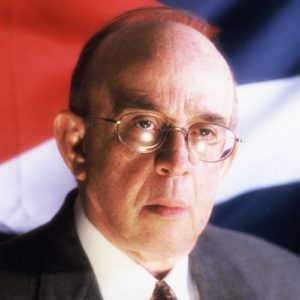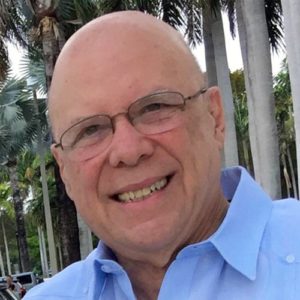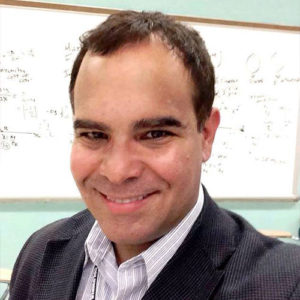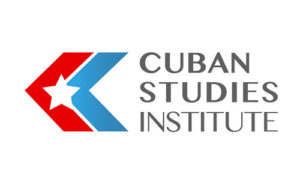PART I
In the early months of the revolution, Castro reasserted his independence from the United States but maintained normal relations. During his visit to the United States in April 1959, he turned down tentative offers of aid, but insisted that Cuba stood with the West in the Cold War. He also met with several U.S. government officials, including then Vice-President Richard Nixon. Yet, as time went on, Castro increased his inflammatory denunciations of the Unites States. He accused the northern neighbor of every exile raid perpetrated against his country and blamed it for Cuba’s economic and political ills.
Initially, The United States followed a “wait and see” policy. The Eisenhower Administration seemed to have been caught by surprise over events in Cuba and failed to grasp the magnitude of the changes going on or the nature of the leader sponsoring those changes. Differences arose between those who, feeling that Castro was a Marxist, advocated a hard line toward Cuba and those who counseled patience with the bearded leader.
Although tensions arose in connection with the public trials and execution of Batista supporters, serious differences grew after the Agrarian Reform Law was promulgated. The United States protested, to no vail, the expropriations initiated under the law. Agricultural expropriations were followed by further attacks on foreign investments, notably in the mining and petroleum industry. Complicating the relations between the two countries were arrests of U.S. citizens, Castro’s refusal to meet with U.S. Ambassador Philip W. Bonsal in late 1959, and the sabotage and raids caried out by Cuban exiles from U.S. territory.
Castro, Guevara, and Raúl believed that the political, social, and economic conditions which had produced their revolution in Cuba existed in other parts of Latin America and that revolutions would occur throughout the continent. From 1960 onward Cuban agents and diplomatic representatives established contact with revolutionary groups in the area and began distributing propaganda and aid. Several Cuban diplomats were expelled for interfering in the internal affairs of the countries to which they were accredited. As tensions mounted with the United States, Castro’s assertion of the international character of his revolution increased, as did his involvement in promoting violence in Latin America. By July 1960 Castro was boasting that he would convert “the Cordillera of the Andes into the Sierra Maestra of Latin America,” and money, propaganda, men, and weapons began to flow from Havana in increasing quantities to foment the “anti-imperialist” revolution.
The radicalization of the revolution and the deterioration of relations with the United States grew apace with Cuban-Soviet rapprochement. In February 1960, following the visit to Havana of Soviet Deputy Premier Anastas Mikoyan, Cuba signed a major trade agreement with the Soviet Union. The agreement provided that Cuba would receive, among other products, Soviet oil in exchange for sugar. But in June United Sates – an English-owned refineries in Cuba refused to process Soviet oil. Also, the U.S. House of Representatives approved a bill granting the president authority to cut foreign sugar quotes at his discretion. Castro retaliated, and on June 28 he nationalized the oil companies. In July, the United States deleted the remaining tonnage of that year’s Cuban sugar quota. In the following months Castro confiscated the remaining U.S. properties together with most major Cuban-owned businesses. In October, the United States announced an embargo on most exports to Cuba, and when Castro restricted the staff of the U.S. embassy to eleven persons, the United States severed diplomatic relations and withdrew its ambassador with the following statement: “There is a limit to what the U.S. in self-respect can endure. That limit has now been reached.”
By then the United States had embarked on a more aggressive policy toward the Castro regime. Groups of Cuban exiles were being trained under the supervision of U.S. officials in Central American camps for an attack on Cuba. The internal situation in the island then seemed propitious for an attempt to overthrow the Cuban regime. Although Castro still counted on significant popular support, that support had progressively decreased. His own 26h of July Movement was badly split on the issue of communism. Also, a substantial urban guerrilla movement existed throughout the island, composed of former Castro allies, Batista supporters, Catholic groups, and other elements that had been affected by the revolution, and significant unrest was evident within the armed forces.
The urban underground saw the landing of the U.S.-sponsored invasion force as the culminating event to follow a series of uprisings and acts of sabotage they hoped would split Castro’s army throughout the island and weaken the regime’s hold over the people. This would coincide with Castro’s assassination and with a coordinated sabotage plan. In the weeks prior to the invasion, violence increased, bombs exploded, shops were burnt.
Yet the planners in exile were not counting on the forces inside Cuba. They placed an unjustified faith in the invasion’s success and feared that the underground might be infiltrated by the regime. Arms that were to be shipped into Cuba never arrived, and communications between the exiles and underground forces were sporadic and confused. The underground was not alerted to the date of the invasion until April 17, the very day of the landing, when it could only watch the Bay of Pigs disaster in confusion and frustration.
The whole affair was a tragedy of errors. Although the Cuban government did not know the date or the exact place where the exile forces would land, the fact that an invasion was in the offing was known in and out of Cuba. The weapons and ammunitions that were to be used by the invading force were all placed in one ship, which was sunk the first day of the invasion. The site for the invasion was sparsely populated, surrounded by swamp, and offered little access to nearby mountains where guerrilla operations could be carried out if the invasion failed. The invading forces could, therefore, all but discount any help from the nearby population.
Some of the air raids by Cuban exiles that were intended to cripple Castro’s air force were cancelled at the last-minute by a confused and indecisive president Joh. F. Kennedy. Perhaps trying to reassert his authority over the CIA-sponsored invasion, to stymie possible world reaction, or to appease the Soviets, Kennedy ordered no further U.S. involvement. Castro’s Sea Fury’s and T33s could, therefore, shot down the exiles’ B26s and maintain control of the air. While the invasion was in progress, Khrushchev threatened Kennedy: “The government of the U.S. can still prevent the flames of war from spreading into a conflagration which it will be impossible to cope with…The world political situation now is such that any so-called ‘small war’ can produce a chain reaction in all parts of the world.”
The failure of the invasion and the brutal repression that followed smashed the entire Cuban underground. On the first day of the invasion, the regime arrested thousands of real and expected oppositionists. The resistance never recovered from that blow. His regime strengthened and consolidated, Castro emerged victorious and boasted of having defeated a “Yankee sponsored invasion.”
*Jaime Suchlicki is Director of the Cuban Studies Institute, CSI, a non-profit research group in Coral Gables, FL. He is the author of Cuba: From Columbus to Castro & Beyond, now in its 5th edition; Mexico: From Montezuma to the Rise of the PAN, 2nd edition, and of Breve Historia de Cuba.








